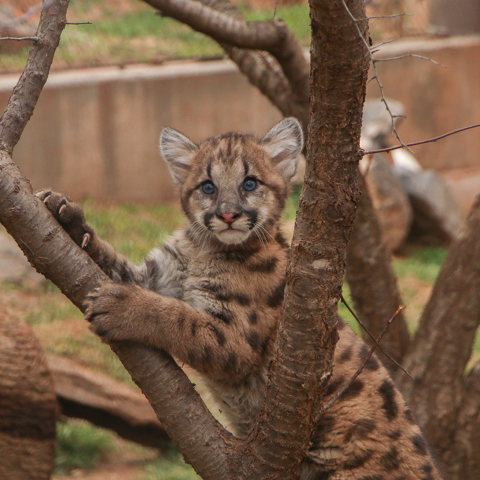Summary of OKC Zoo’s Top 10 Cures for Your Spring Break Fever:
Springtime brings perfect weather to Oklahoma City, making it an ideal time for a visit to the Oklahoma City Zoo and Botanical Garden. Here are 10 enticing reasons to plan a spring break visit:
10. **Dine with Dragons** – Enjoy a meal at the Lotus Pavilion restaurant, viewing the Komodo dragon habitat.
9. **Renovated Picnic Grounds** – Picnic at the newly renovated Devon Picnic grounds.
8. **Wild Encounters** – Experience behind-the-scenes interactions with animals like grizzly bears, flamingos, and Asian elephants, guided by expert animal caretakers. Note: This requires an additional fee, and children must be at least 6 years old and accompanied by an adult.
7. **Baby Kai** – Spend time with Kai, a 6-month-old Asian elephant experiencing her first spring.
6. **Sanctuary Asia**—Explore the Zoo’s latest 11-acre expansion, which highlights the incredible animals of Asia.
5. **Free Family Activities** – Take part in daily free activities, including an EYE SPY SAFARI, ASK A KEEPER sessions, a visit to the corral at Children’s Zoo, or an elephant presentation.
4. **Meet the Tanuki** – Encounter the tanuki, also known as Japanese raccoon dogs, which are rare in the United States. The Zoo features two habitats that house tanuki.
3. **Zoo in Bloom** – Enjoy seeing thousands of blooming flowers throughout the Zoo.
2. **Mountain Lion Cubs**—Marvel at the adorable mountain lion cubs, either in person or through the Zoo’s cubcam.
1. **Camel Rides**—Embark on a unique adventure with camel rides, which are available for an additional fee.
These activities offer a rich and diverse experience, making the Oklahoma City Zoo and Botanical Garden a must-visit destination during the spring season.
– The importance of educational programs in zoos for wildlife conservation
– The role of modern zoological gardens in animal welfare and species preservation
– How visitor experiences at zoos like OKC contribute to conservation efforts
– The significance of botanical gardens within zoo settings for biodiversity
Educational programs in zoos play a crucial role in wildlife conservation, serving as crucial platforms for raising awareness and fostering a deeper understanding of the complex relationships within natural ecosystems. These programs, exemplified by the offerings at the Oklahoma City Zoo and Botanical Garden, allow visitors to learn about the behaviors, habitats, and challenges facing different species. By engaging directly with knowledgeable staff and through interactive experiences, zoo visitors gain insights into the importance of preserving biodiversity and how human activities impact wildlife.
Modern zoological gardens are at the forefront of animal welfare and species preservation efforts. These institutions are far more than venues for public entertainment; they are vital centers for research, conservation, and education. Zoos like the OKC Zoo are deeply committed to creating environments that closely mimic natural habitats, researching animal health and behavior, and participating in global breeding programs to prevent extinction. The ethical management and presentation of various species allow visitors to appreciate the diversity of life and the importance of coexistence.
Visitor experiences at zoos significantly contribute to conservation efforts. Each encounter, whether a behind-the-scenes tour with grizzly bears or witnessing the playful antics of mountain lion cubs, connects people with nature on a personal level. This connection is essential for fostering a sense of responsibility towards wildlife protection. Moreover, many zoos, including the OKC Zoo, channel a portion of their proceeds into conservation projects worldwide, meaning that each visit supports global efforts to protect endangered habitats and animals.
The inclusion of botanical gardens within zoological settings, as seen at the OKC Zoo, further underscores the importance of preserving plant life alongside animal species. Botanical gardens are beautiful spaces for leisure and learning and are critical for biodiversity conservation. They serve as living libraries of plant genetics, offering invaluable research, education, and conservation resources. By maintaining diverse plant species, including those at risk of extinction, botanical gardens play a pivotal role in sustaining ecosystems that support animal life.
Zoos like the Oklahoma City Zoo and Botanical Garden are essential in the broader context of environmental conservation and education. Through carefully crafted exhibits, educational programs, and a strong emphasis on conservation, these institutions offer visitors a comprehensive insight into the natural world. The experiences entertain and educate, inspiring a new generation of conservationists and wildlife enthusiasts. The OKC Zoo’s approach to combining direct wildlife encounters with educational outreach and conservation projects exemplifies modern zoos’ essential role in today’s society. Through their efforts, zoos contribute significantly to preserving biodiversity and promoting sustainable interactions between humans and the natural world.


